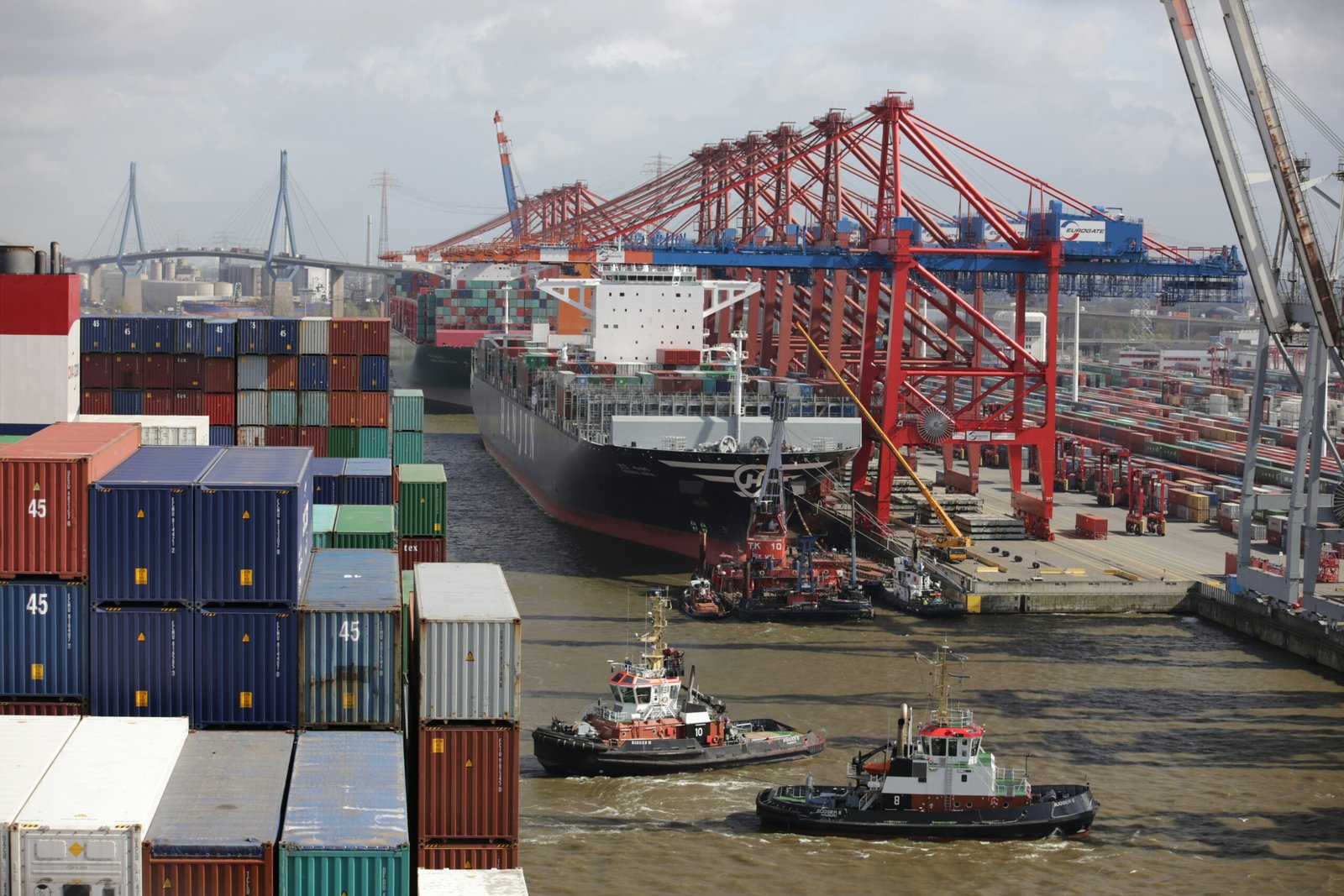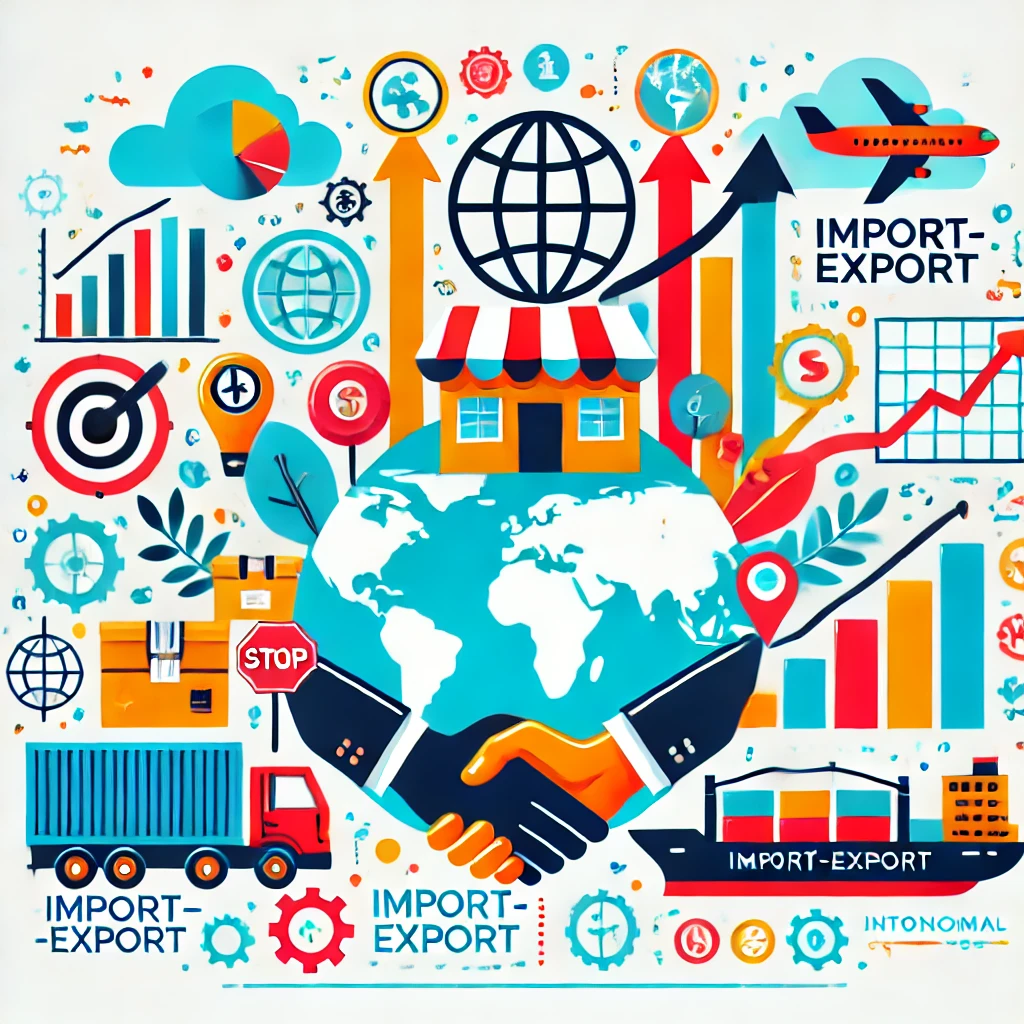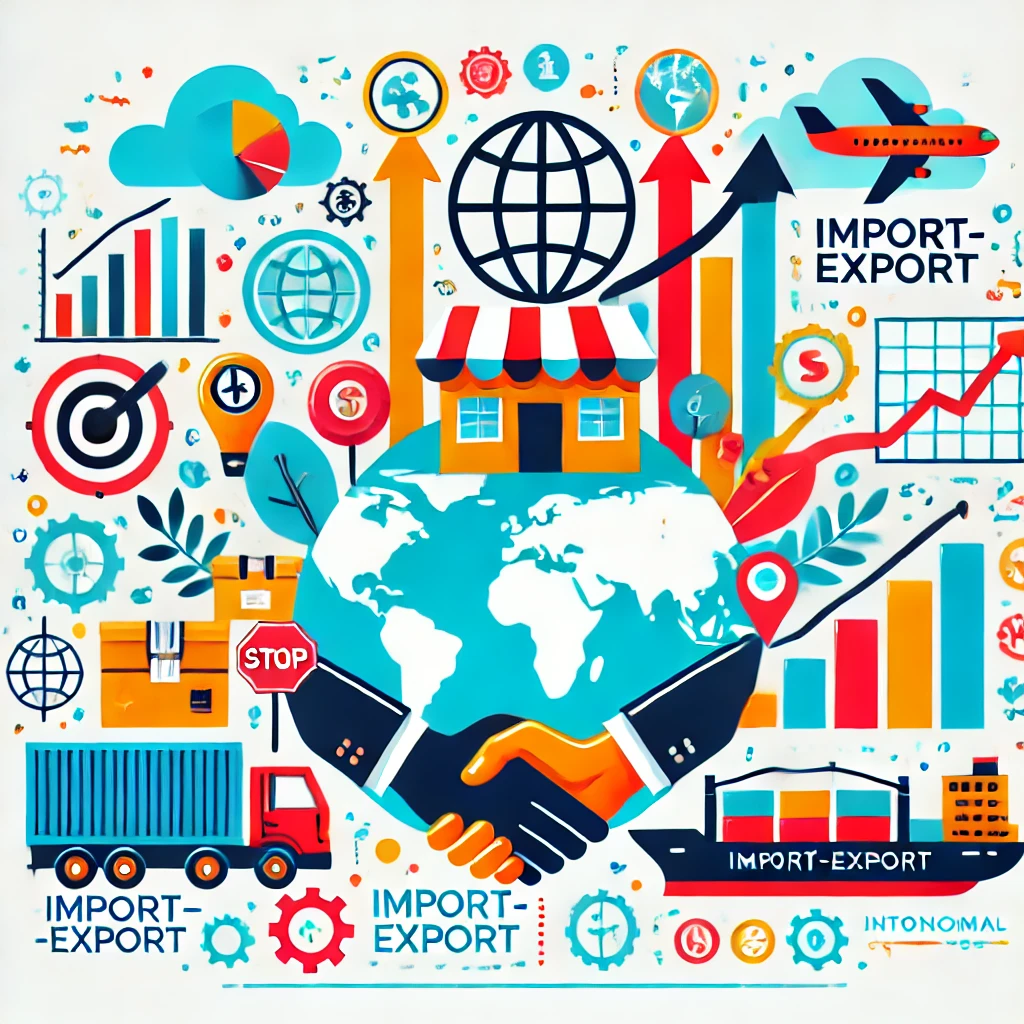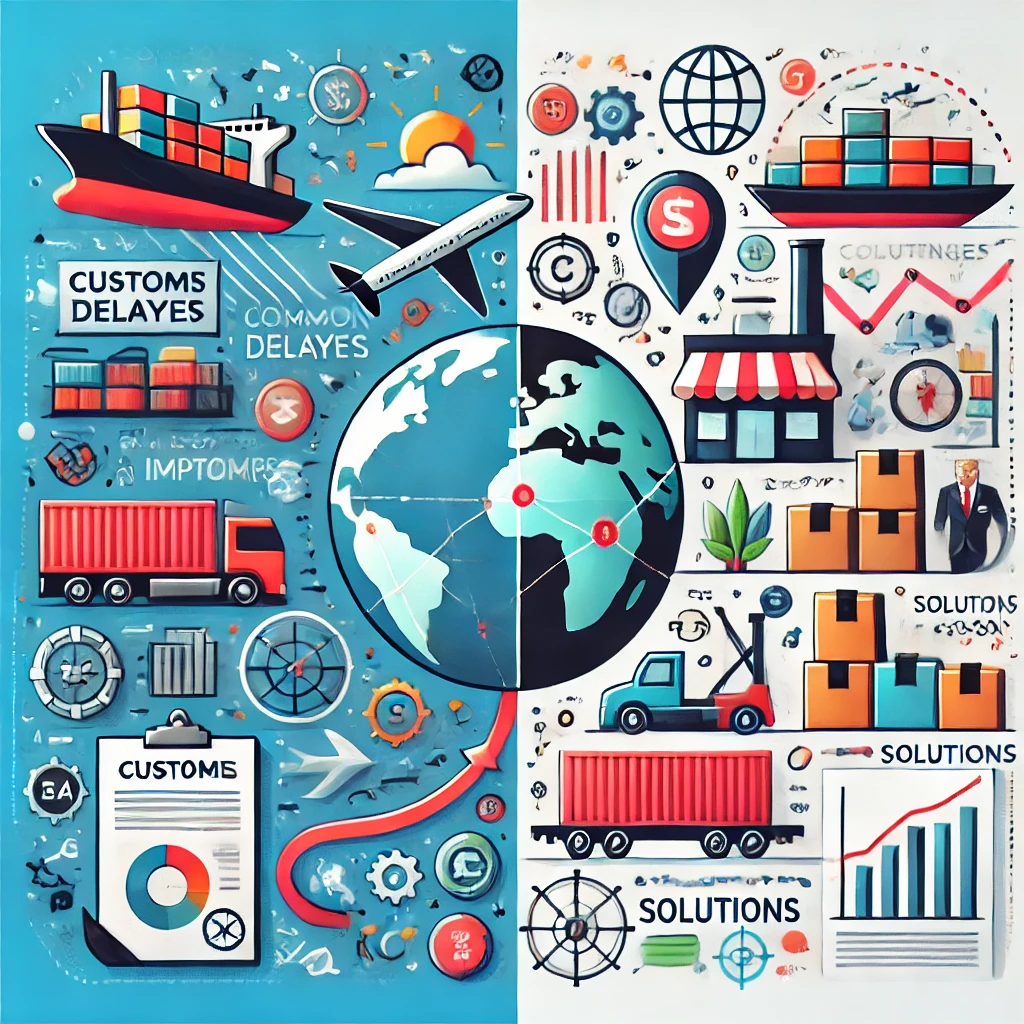Introduction to Import Export Business Databases
An import-export business database provides a structured repository of essential information that supports international trade operations.
It serves as a central hub where data regarding suppliers, customers, products, shipments, and transactions can be managed effectively.
In the increasingly complex landscape of global commerce, having a well-organized database is crucial for entrepreneurs seeking to optimize their operations and enhance efficiency.
The significance of an import-export business database lies in its ability to facilitate better decision-making.
With real-time access to vital information, businesses can track inventory levels, monitor shipment statuses, and analyze market trends.
This streamlined access to data not only enhances operational efficiency but also enables entrepreneurs to respond swiftly to changing market conditions.
Furthermore, a robust database can improve communication and coordination across different departments, ensuring that all stakeholders are aligned and informed.
One of the primary benefits of maintaining a comprehensive database is the organization it brings to import-export processes.
By categorizing and storing data systematically, businesses can minimize errors and discrepancies, which are common pitfalls in trading operations.
Additionally, a well-maintained database aids in compliance with various regulations and standards governing international trade, thereby reducing the risk of legal complications.
Moreover, a business database provides enhanced information accessibility.
Entrepreneurs can easily retrieve data needed for reporting and analysis, allowing them to make informed decisions based on accurate insights.
Whether it is historical shipment data or contact information for suppliers, such accessibility is vital for effective management.
Overall, an import-export business database is a strategic asset that significantly contributes to the success and sustainability of trading activities in a competitive market.
Identifying Your Database Needs
Building an effective import-export business database begins with clearly identifying your specific needs. The first step in this assessment involves determining the types of data that are crucial for your operations.
Common data categories include contacts, trade data, supplier information, and customer profiles. Each category serves a distinct function in the overall business strategy, making it essential to clearly outline what information is necessary for your database.
Next, consider how this information will be utilized. Understanding the purpose of the database will guide the types of data you collect.
For instance, if your objective is to enhance customer relationship management, collecting detailed contact information, purchase history, and feedback may be paramount.
On the other hand, if your focus is on supplier management, you would benefit more from gathering vendor reliability metrics and product specifications.
Thus, determining the primary usage of your database can drastically influence the direction of your data collection efforts.
It is equally important to set clear objectives for your database usage. This involves envisioning how each piece of data will contribute to achieving your business goals.
Will the data be employed for strategic decision-making, market analysis, or improving customer service? Formulating specific goals creates a roadmap for the information you need to collect and maintain.
Moreover, setting measurable outcomes will help in assessing whether the database fulfills its intended purpose.
In summary, identifying your database needs requires a systematic approach involving data categorization, purpose assessment, and objective formulation.
A well-defined database aligned with your business objectives will not only streamline your operations but also enhance your decision-making processes, ultimately leading to increased profitability in your import-export business.
Choosing the Right Database Software
When establishing an import-export business, selecting the appropriate database software is crucial for managing contacts, transactions, and compliance.
The right database solution should align with your business requirements while offering scalability and user-friendly features.
To aid in your decision-making process, we will explore several popular database options on the market, considering their strengths and weaknesses.
One of the most widely utilized database systems is Microsoft Access.
This platform allows users to create databases without extensive programming knowledge, making it an ideal choice for small businesses.
Its integration with other Microsoft Office applications enhances usability, enabling efficient data management and reporting.
However, its scalability may be limited for larger enterprises that require more robust capabilities.
For businesses anticipating growth, cloud-based solutions like Salesforce or Zoho might be more suitable.
These database exporters not only provide comprehensive customer relationship management (CRM) tools but also allow for seamless data integration across platforms.
The cloud-based nature ensures accessibility from various devices, however, their subscription costs can accumulate over time, influencing overall expenditure.
Another notable option is MySQL, an open-source relational database management system, which offers flexibility and control over data.
It is particularly favored among developers and larger businesses due to its capability to handle extensive datasets.
While it requires a degree of technical knowledge for setup and maintenance, its customization possibilities are vast.
In evaluating these options, consider how user-friendly each database software is for your team, as well as its ability to adapt to your future growth.
Take into account features pertinent to your import-export operations, such as tracking shipments, managing contacts, and generating financial reports.
A holistic assessment of your business needs against the capabilities of each software will facilitate a more informed choice.
Structuring Your Database
When establishing a robust import-export business, the structuring of your database is paramount. A well-organized database not only enhances efficiency but also enables better decision-making processes.
To begin, it is essential to categorize the data into logical segments. Common categories include suppliers, customers, and products, each serving a distinct purpose within your operations.
Within these categories, it is critical to define specific data fields.
For instance, under suppliers, data fields may include supplier name, contact information, payment terms, and delivery schedules.
For customers, fields could encompass customer name, shipping address, order history, and payment methods.
The product category would typically hold product name, description, pricing, and stock levels. Each of these data fields should be meticulously crafted to support comprehensive analytics and efficient retrieval.
Furthermore, understanding the relationships between different data sets is essential. For example, a supplier may supply various products to multiple customers.
Establishing these relationships allows for better tracking of supply chain dynamics and can aid in managing inventory levels effectively.
This relational structure can be implemented through foreign keys in a relational database, facilitating seamless interconnections across data points.
Data integrity must be a guiding principle throughout the database design process.
This entails ensuring that the data entered is accurate, consistent, and up-to-date. Employing validation rules and regular audits can help maintain this integrity over time.
An organized database not only simplifies the import-export processes but also lays the foundation for future scalability and adaptability in an ever-changing market landscape.
Populating Your Database with Data
Building a comprehensive database is essential for any import-export business seeking efficiency and success. The first step in this endeavor is to gather and enter data into your database.
There are various approaches to collect and input this information, each with its own advantages.
One common method is manual input, where you systematically enter details about contacts, trade data, and suppliers directly into the database.
This technique can be meticulous but ensures that the information is accurate and relevant, particularly for specific needs.
Another approach to populating your database is through file uploads.
This method allows you to import bulk data from spreadsheets or other files, significantly accelerating the database population process.
By using compatible formats such as CSV or Excel files, you can streamline the entry of multiple records at once, saving valuable time and reducing the potential for human error.
Integrating existing data sources is also a highly effective strategy. Many businesses possess legacy data that can be linked or migrated into the new database system.
Utilizing APIs and data connectors can help in this integration, allowing for seamless data transfer from platforms or other database systems already in use.
This process not only provides a wealth of contact information and trade data at your disposal but also enriches your database with historical insights.
Data collection techniques are paramount in maintaining high-quality information within your database.
Implementing verification processes, such as validating contact details and trade metrics, will contribute to the integrity of your data.
Regularly updating and cleansing your database ensures that the information remains accurate and consistent, which is crucial for effective business operations.
Employing these diverse methods will lay a solid foundation for your import-export business database, supporting future growth and success.
Maintaining Data Accuracy and Security
Ensuring the accuracy and security of a database is paramount for the success of an import-export business.
Accurate data not only facilitates efficient operations but also strengthens decision-making processes.
As an exporter, maintaining an up-to-date and precise database can prevent costly errors and reputational damage.
Therefore, implementing best practices for data validation and regular audits is crucial.
Data validation involves inspecting the information for completeness and correctness when it is entered into the database.
This can be achieved by employing various techniques such as automatic checks, user input restrictions, and the establishment of standardized data formats.
Regular audits are essential for identifying and correcting discrepancies within the database.
Conducting these audits on a scheduled basis allows businesses to detect outdated or erroneous information and take corrective actions before it leads to more significant problems.
Auditing not only improves the reliability of data but also fosters a culture of accountability within the organization.
By ensuring that database records are perpetually updated and validated, an importer or exporter can maintain integrity in business operations.
Data security is another critical aspect of maintaining database accuracy.
Sensitive information, including client details, financial records, and shipping information, must be rigorously protected against unauthorized access and data breaches.
Implementing user access controls ensures that only designated individuals can modify and retrieve sensitive data, minimizing the risk of insider threats.
Additionally, encrypting data, both at rest and during transmission, adds a layer of protection against potential interception.
Regularly backing up the database is equally important; it allows for data recovery in case of system failures or cyberattacks, thus safeguarding business continuity.
In conclusion, maintaining data accuracy and security in an import-export business database involves several elements, including diligent data validation, regular audits, and effective security measures.
By prioritizing these practices, businesses can enhance their operational effectiveness and protect sensitive information effectively.
Utilizing Your Database for Effective Business Management
Building a comprehensive database is just the first step in enhancing business management capabilities for an import-export business.
Effectively utilizing this database can lead to substantial improvements in market analysis, trend identification, and strategic decision-making related to suppliers and customers.
A well-organized database allows businesses to analyze market dynamics.
By maintaining up-to-date records of market conditions and competitor activities, exporters can effectively identify emerging trends and adjust their strategies accordingly.
For instance, an exporter may notice patterns in demand for certain products in specific markets, enabling them to optimize their inventory and distribution strategies to meet these demands.
Moreover, leveraging the data from the database can help businesses make informed decisions about potential suppliers and customers.
By analyzing past interactions, payment histories, and performance metrics stored in the database, exporters can evaluate the reliability and efficiency of their partners.
This analysis assists in building stronger relationships with high-performing suppliers and identifying customers who consistently provide timely payments.

Utilizing analytics tools to extract insights from the database can also enhance strategic decision-making.
By generating reports that summarize sales performance and market trends, exporters can assess their operations more effectively and identify areas for improvement.
These reports can aid in forecasting future sales and understanding seasonal fluctuations, which are crucial for planning purposes.
Furthermore, segmenting the data in the database can help exporters tailor their marketing campaigns to specific customer audiences, ensuring that communication is relevant and effective.
By understanding customer preferences through the database, businesses can implement targeted marketing efforts that increase engagement and drive sales.
By employing these strategies, exporters can truly capitalize on the wealth of information contained within their databases, streamlining operations and enhancing overall business management practices.
Integrating Your Database with Other Tools
Integrating your database with other business tools is a crucial step in enhancing operational efficiency and productivity.
By connecting your database to various systems such as Customer Relationship Management (CRM), accounting, and inventory management software, businesses can benefit from a seamless flow of information across platforms.
This integration enables a holistic view of operations, allowing stakeholders to make informed decisions based on real-time data.
One of the primary advantages of such an interconnected system is the reduction of manual data entry tasks.
For instance, when your database communicates automatically with the CRM, customer information is updated in real time, ensuring accuracy and saving precious time for your team.
The same applies to accounting software; when sales data is directly pulled from the database, it minimizes the risk of human error and enhances financial reporting efficiency.
Such synchronization not only streamlines workflows but also improves data reliability, which is vital for businesses that depend on accurate forecasting and analysis.
Additionally, integration fosters better inventory management.
When your database interacts with inventory systems, it optimizes stock levels, automates reorder triggers, and reduces discrepancies.
The outcome is a more agile business capable of responding swiftly to market demands while maintaining optimal inventory levels.
By automating these processes, companies can focus their efforts on strategic initiatives rather than routine tasks, thus driving overall productivity.
Moreover, the centralized information flow facilitates enhanced communication among departments.
Sales, marketing, finance, and operations can access and share data easily, leading to better collaboration and alignment in achieving common business goals.
Embracing this integrative approach to managing your database not only streamlines processes but also provides a robust foundation for scalability and future growth.
Future-Proofing Your Database
In an ever-changing business landscape, future-proofing your database is essential for maintaining its relevance and effectiveness in supporting your import-export operations.
As technology advances and market dynamics shift, ensuring that your database can adapt to new requirements becomes vital for sustained success.
One strategy for achieving this is to design your database with scalability in mind.
This involves creating a flexible architecture that can accommodate growing data volumes, additional user roles, and varying data types without requiring substantial overhauls.
Scalability can be achieved through cloud-based solutions which offer the capability to adjust resources based on demand.
Cloud databases often provide built-in tools for data management, analytics, and security that evolve with technological advancements, ensuring optimal performance as your business expands.
In addition to scalability, ongoing training for your team is crucial. Regularly updating staff on new features or methodologies pertaining to database management can maximize your operational efficiency and improve overall data integrity.
Moreover, continuously enhancing your database is a key aspect of future-proofing.
This could involve integrating new technology such as artificial intelligence or machine learning tools that can provide insights or automate certain data processes.
Such enhancements not only streamline operations but also offer a competitive advantage by enabling refined decision-making based on comprehensive market data.
Implementing feedback loops where stakeholders can share their experiences with the database also fosters an environment of continuous improvement.
To sum up, a proactive approach towards database management that focuses on scalability, ongoing education, and consistent enhancements will significantly fortify your import-export business against future challenges.
By prioritizing these elements, your database will remain a robust asset as your business evolves.
















